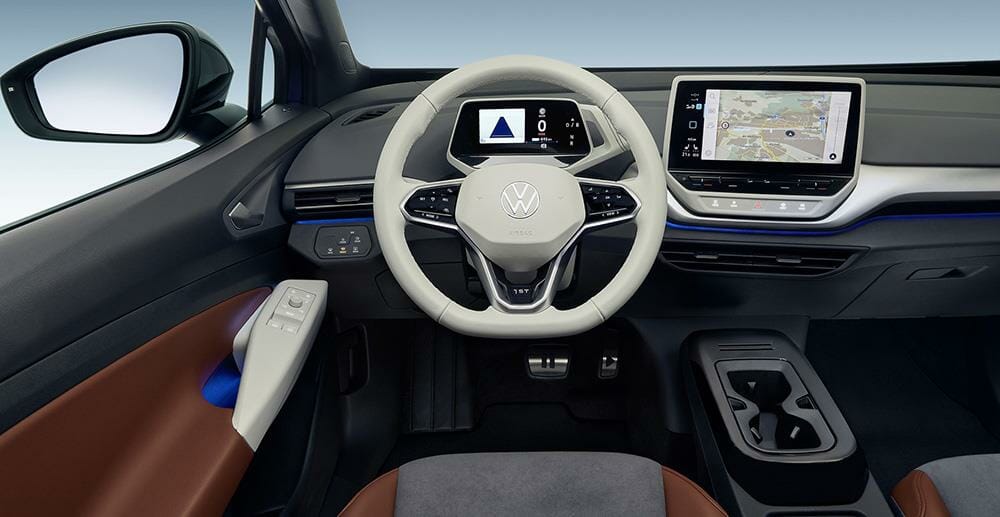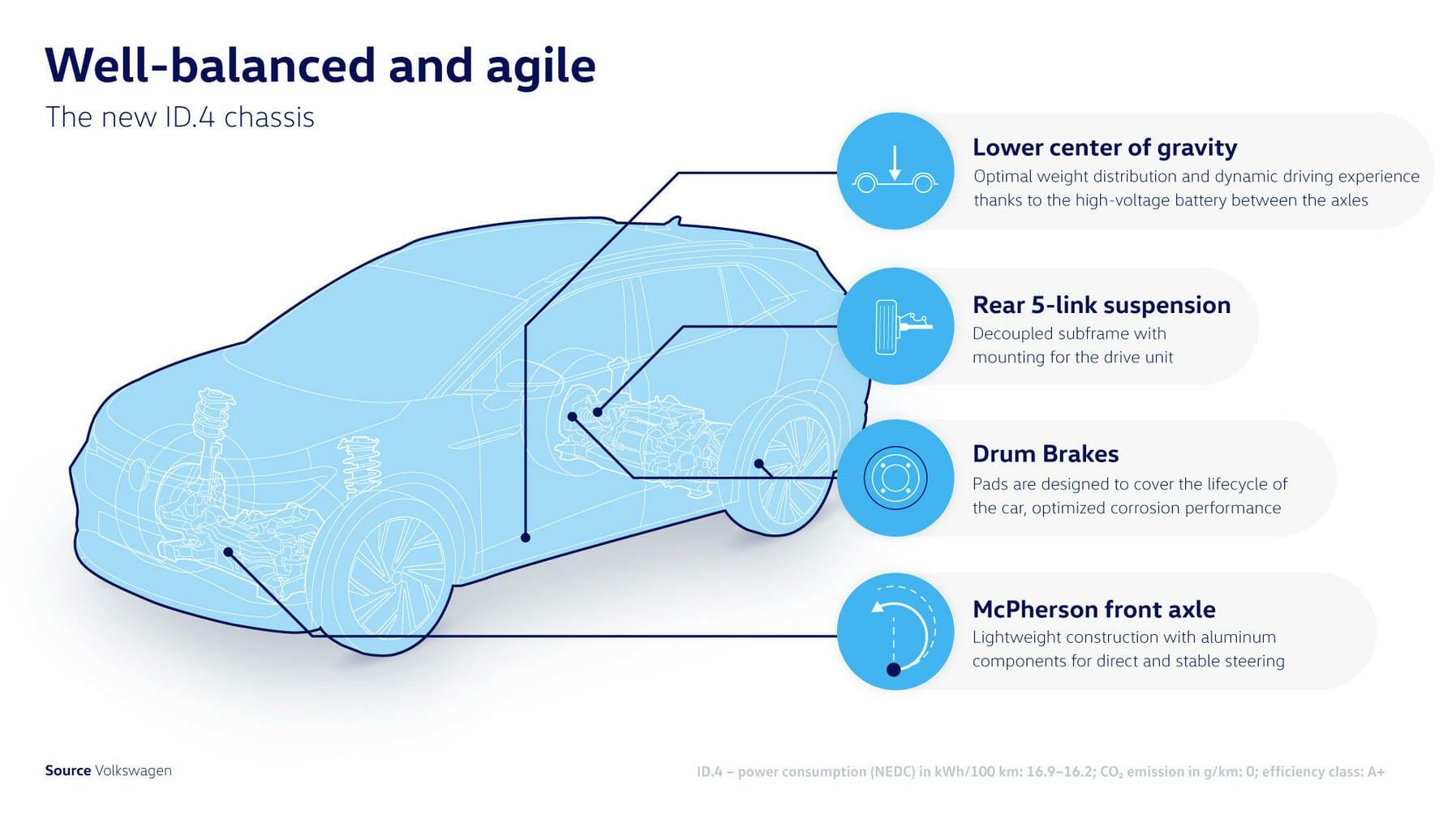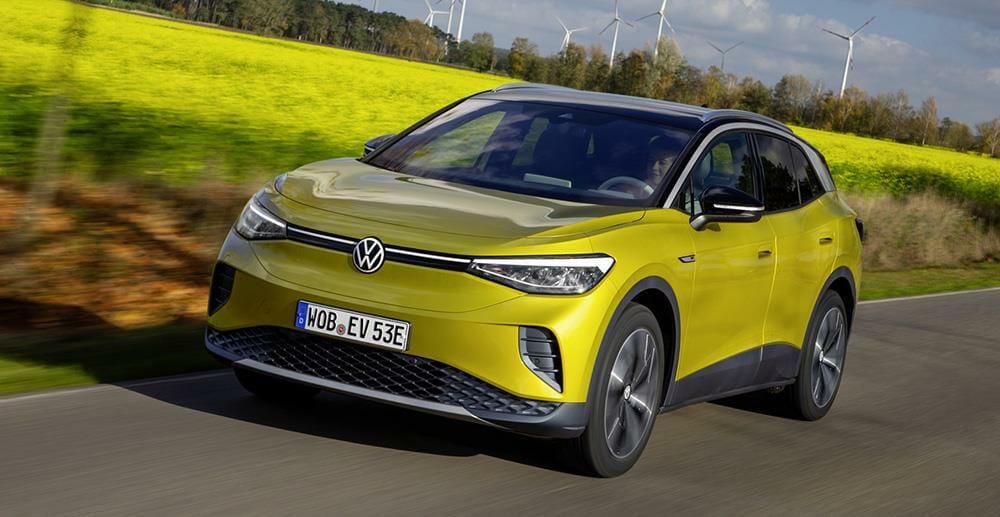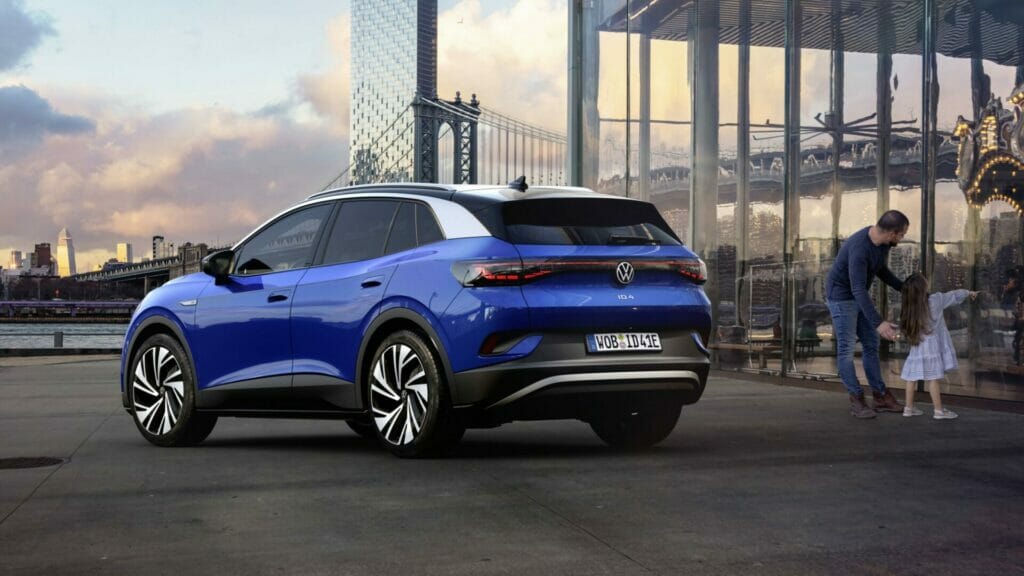The new ID.4 is an all-rounder that is easy to drive thanks to Volkswagen’s investment of know-how into the chassis of the E-SUV in the mechanical components and the electronic control system.
Sporty handling
The rear-wheel drive ensures strong traction, while the high-voltage battery located between the axles at the lowest point of the car gives weight distribution between the two axles that’s no more than one per cent beyond the ideal 50:50 split.
The front axle follows the McPherson design, and the steering is translated with a 15.9:1 ratio. For the first time at Volkswagen, the steering system is located in front of the centre of the wheel, this position guarantees high stability during fast cornering. At the rear is a complex new compact five-link suspension with a sub-frame that is elastically connected to the body. Parts of the suspension are made of lightweight aluminium to reduce weight.
Large wheels and powerful brakes
The range of wheels for the ID.4 starts with the 18-inch format, in steel or aluminium. Starting with the ID.4 Life model, 19-inch wheels are standard; above that, there are only 20 or 21-inch light-alloy wheels. The ID.4 only requires a turning circle of 10.2m – extremely little for a car in its class.
The wheels are aerodynamically optimised by their flat design, and the tyres have low rolling resistance. In the ID.4 Pure and ID.4 City entry-level models, they are 235mm wide at the front and rear. All other ID.4 models have – 235mm wide at the front and 255mm at the rear.
The discs on the front axle of models with the 77kWh battery are 358mm wide. Drum brakes operate on the rear wheels, and their pads are designed to last the lifespan of the car. The rear brakes are rarely used in everyday driving because most of the deceleration is performed by the electric motor, which recovers energy in the process.

Driving mode selection
With the ‘Plus’ sports package (in the top model ID.4 Max), the ID.4’s chassis is transformed by ‘Progressive Steering’, which works more and more directly as the steering angle increases – its ratio ranges from 15.9:1 to 14.5:1. Alongside this is the DCC adaptive chassis control, which regulates the characteristics of the damper on each wheel 200 times per second to enables a high level of ride comfort or a tight connection to the road.
Driving Profile Selection gives the driver a choice of four modes - Eco, Comfort and Sport are preconfigured – plus Individual that gives additional setting options on the central display.

Vehicle Dynamics Manager
When the driver wants to, the ID.4 takes corners very quickly, stably and almost naturally, thanks to the electronic Vehicle Dynamics Manager, which works closely with the electronic stability control (ESC). The dynamics manager controls the wheel-selective brake interventions of the XDS electronic transverse drive lock and the work of the DCC damper control. It uses a digital target model to achieve optimum driving and steering behaviour. As soon as the vehicle turns into a corner, the ID.4 behaves more spontaneously, linearly and accurately.
Eight models
The ID.4 will be launched after the 1ST Edition with eight preconfigured models. The high-voltage battery is available with 52 or 77 kWh energy capacity (net), the range is up to 520km (WLTP). The electric motor is available in three power levels between 148PS and 204PS.


